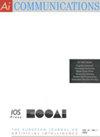基于非分布检测的人体活动识别跌倒分类
IF 1
4区 计算机科学
Q4 COMPUTER SCIENCE, ARTIFICIAL INTELLIGENCE
引用次数: 0
摘要
随着研究界专注于提高深度学习的可靠性,识别分布外(OOD)数据变得至关重要。在测试/预测期间检测OOD输入允许模型考虑模型未知的判别特征。这种能力增加了模型的可靠性,因为该模型仅在与训练数据类似的输入数据处提供类预测。尽管OOD检测在计算机视觉中已经得到了广泛的应用,但在其他领域却相对未被探索,比如基于时间序列的人类活动识别(HAR)。由于不确定性一直是基于视觉的模型中OOD的关键驱动因素,因此相同的组件在时间序列应用中已被证明是有效的。在这项工作中,我们提出了一个基于集成的时间学习框架来解决具有时间序列数据的HAR中的OOD检测问题。首先,我们为HAR定义了不同类型的OOD,这些OOD源于现实场景。然后,我们应用我们的基于集成的时间学习框架,结合不确定性来检测定义的HAR工作负载的OOD。这种特殊的配方还允许一种新的跌倒检测方法。我们在非跌倒活动上训练我们的模型,并将跌倒检测为OOD。我们的方法在使用更少数据的跌倒检测任务中显示出最先进的性能。此外,在所有其他选择的数据集中,集成框架在OOD检测任务上优于传统的深度学习方法(我们的基线)。本文章由计算机程序翻译,如有差异,请以英文原文为准。
Classifying falls using out-of-distribution detection in human activity recognition
As the research community focuses on improving the reliability of deep learning, identifying out-of-distribution (OOD) data has become crucial. Detecting OOD inputs during test/prediction allows the model to account for discriminative features unknown to the model. This capability increases the model’s reliability since this model provides a class prediction solely at incoming data similar to the training one. Although OOD detection is well-established in computer vision, it is relatively unexplored in other areas, like time series-based human activity recognition (HAR). Since uncertainty has been a critical driver for OOD in vision-based models, the same component has proven effective in time-series applications. In this work, we propose an ensemble-based temporal learning framework to address the OOD detection problem in HAR with time-series data. First, we define different types of OOD for HAR that arise from realistic scenarios. Then we apply our ensemble-based temporal learning framework incorporating uncertainty to detect OODs for the defined HAR workloads. This particular formulation also allows a novel approach to fall detection. We train our model on non-fall activities and detect falls as OOD. Our method shows state-of-the-art performance in a fall detection task using much lesser data. Furthermore, the ensemble framework outperformed the traditional deep-learning method (our baseline) on the OOD detection task across all the other chosen datasets.
求助全文
通过发布文献求助,成功后即可免费获取论文全文。
去求助
来源期刊

AI Communications
工程技术-计算机:人工智能
CiteScore
2.30
自引率
12.50%
发文量
34
审稿时长
4.5 months
期刊介绍:
AI Communications is a journal on artificial intelligence (AI) which has a close relationship to EurAI (European Association for Artificial Intelligence, formerly ECCAI). It covers the whole AI community: Scientific institutions as well as commercial and industrial companies.
AI Communications aims to enhance contacts and information exchange between AI researchers and developers, and to provide supranational information to those concerned with AI and advanced information processing. AI Communications publishes refereed articles concerning scientific and technical AI procedures, provided they are of sufficient interest to a large readership of both scientific and practical background. In addition it contains high-level background material, both at the technical level as well as the level of opinions, policies and news.
 求助内容:
求助内容: 应助结果提醒方式:
应助结果提醒方式:


